The world of note-taking applications is crowded than ever. However, among the dozens of options, OneNote and Evernote have consistently dominated the conversation, each having a loyal user base and a robust set of features. Both veterans have managed to stay afloat with frequent updates. However, which one is better in 2025? To finally put this long-standing question to the test, I decided to start an experiment: using OneNote and Evernote side-by-side as my primary note-taking tools for an entire month.
Let me detail my experiences, observations, and ultimately, reveal which one emerged as the undisputed champion in my daily digital life.
OneNote has a better user interface
Being native helps
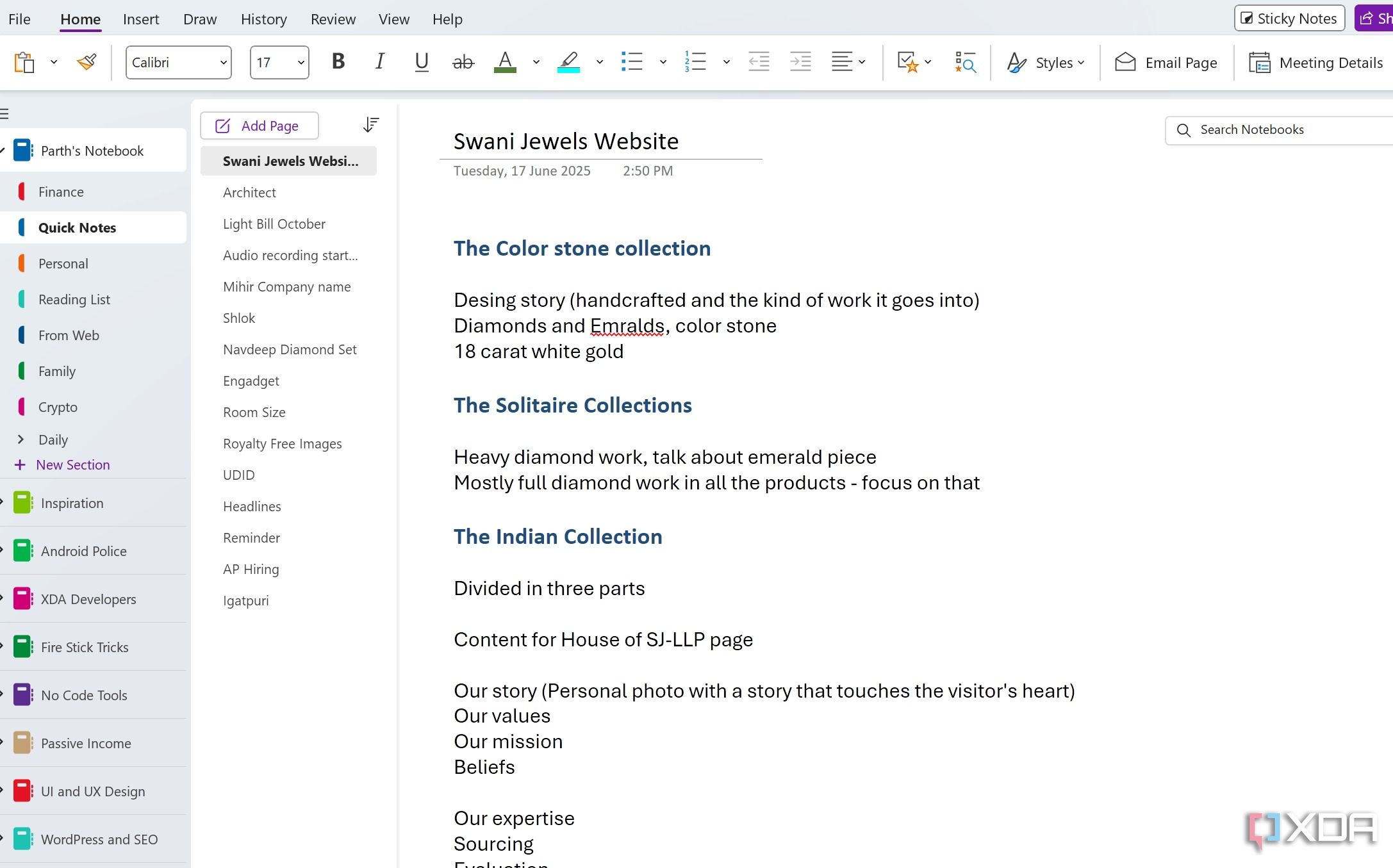
During my month-long trial, one area where OneNote consistently held an edge was its native experience across all platforms. Whether I was on my Windows desktop, MacBook Pro, Pixel 8, or iPad Pro, the OneNote app felt like it belonged. It was snappy, responsive, and worked like a charm.
Ever since version 10.0, Evernote has switched to the Electron framework. This means the core code is shared across Windows, Mac, and web, which technically speeds up development. While the company has improved its performance and cross-platform consistency, there are times when I would be reminded that I was using an Electron-based app.
There were slight delays in app launches, occasional choppiness when scrolling through a large note, and animation glitches.
A huge advantage over OneNote
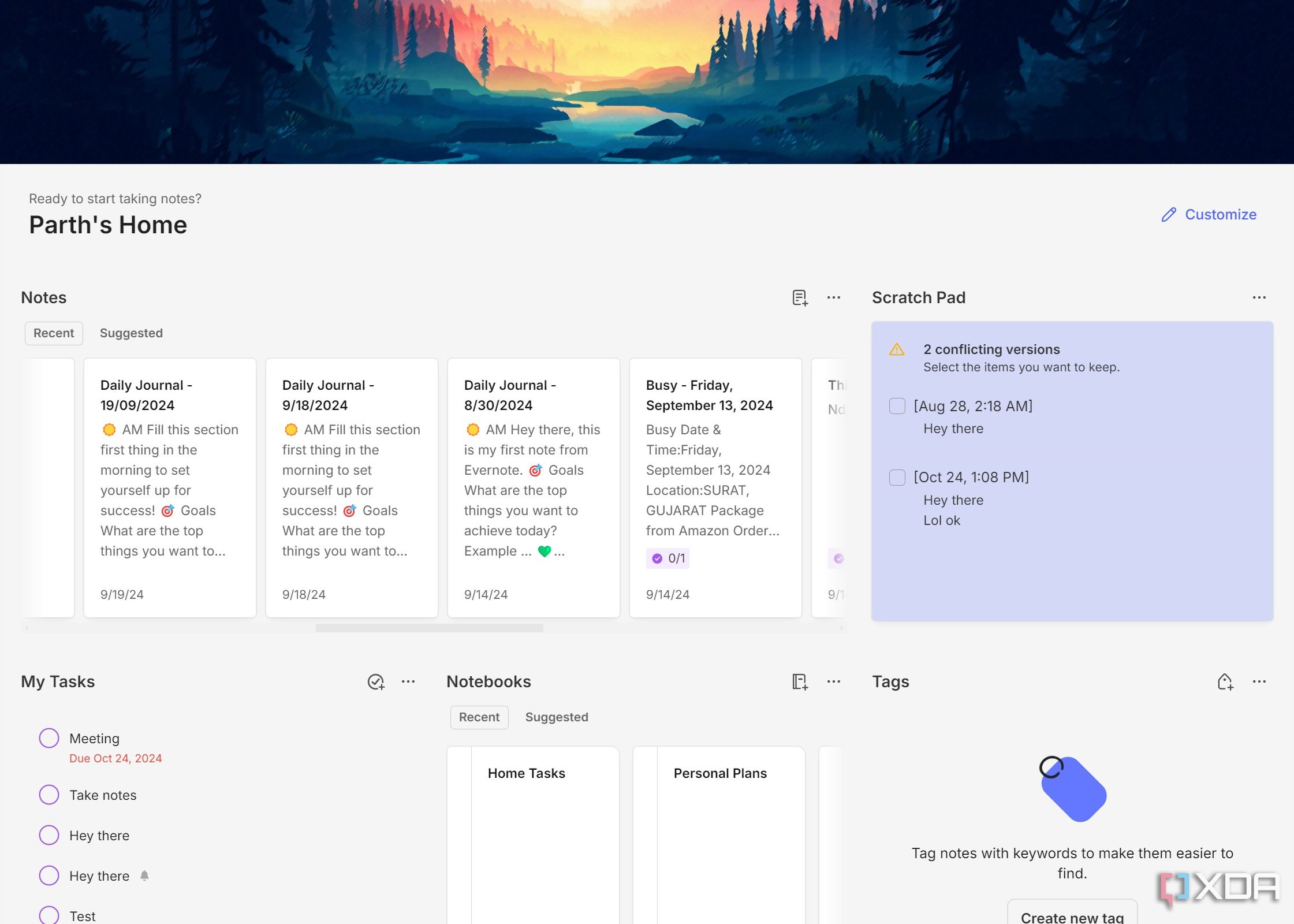
Evernote Home is an absolute joy to work with. The moment I open Evernote, it greets me with a beautifully designed, highly customizable dashboard that puts all my critical information at my fingertips. I can see my recent notes, tasks, calendar events, and even utilize the scratch pad for a quick note.
What truly impressed me was the level of personalization. I could rearrange and resize these widgets to create a layout that suits my workflow. Adding a wallpaper at the top is another neat aesthetic touch from the green elephant.
Both the apps have nailed the organization
With different philosophies
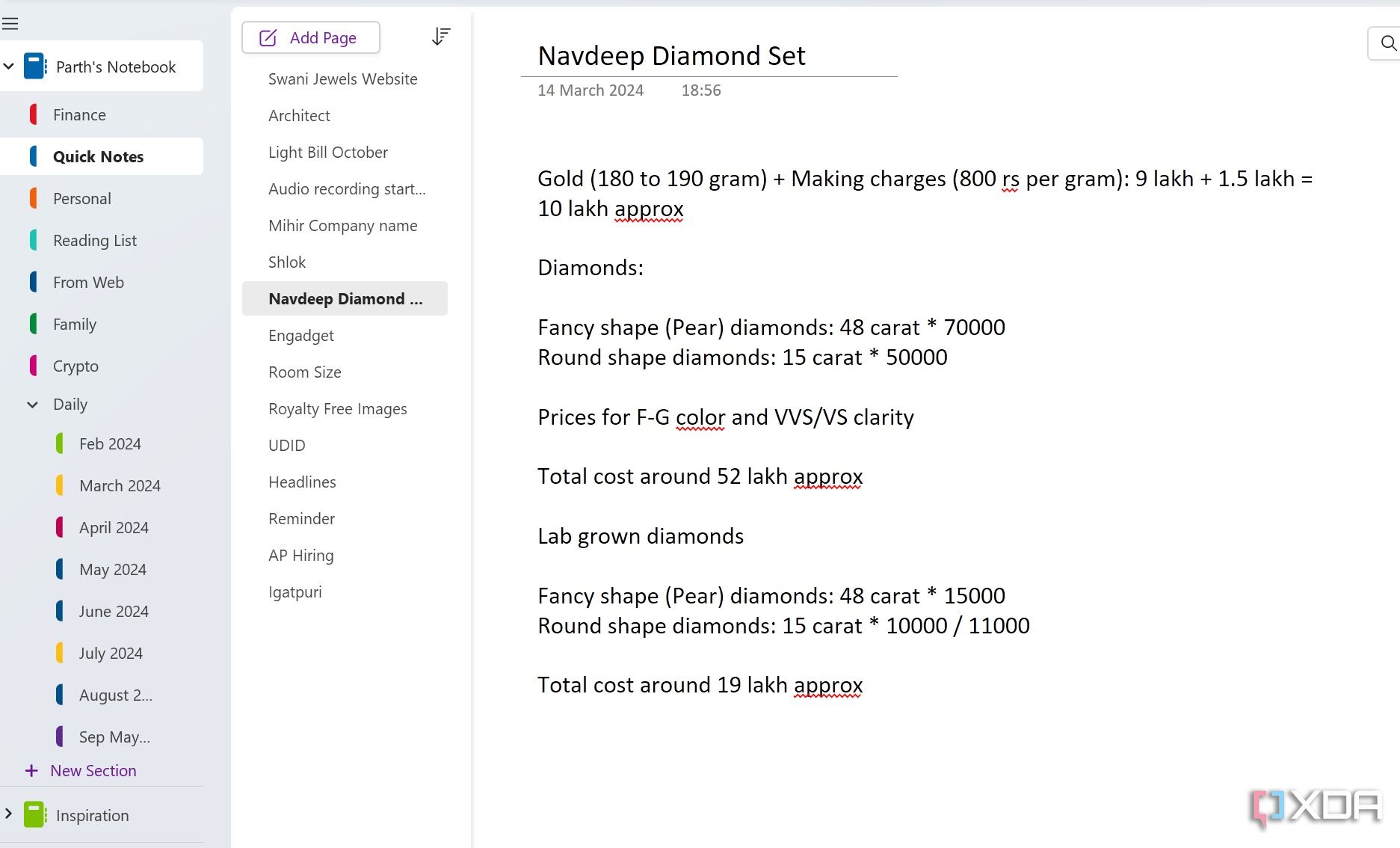
Both OneNote and Evernote have clearly put a lot of thought into how users organize their information. Each takes a fundamentally different, yet effective, approach. OneNote offers a familiar physical notebook metaphor where I can create different notebooks, sections, sub-sections, and add pages to them. It’s a neat and tidy system, perfect for those who prefer a structured, folder-like approach.
Evernote uses a tagging system. I can apply multiple tags to a single note and filter them in no time. Furthermore, Evernote’s Shortcut menu became my best friend. Being able to pin frequently accessed notes, notebooks, and even specific tags directly to that menu meant I could jump to exactly what I needed with a single click. I found Evernote’s approach more efficient than OneNote’s more traditional hierarchy.
Evernote Calendar and tasks are neat add-ons
A huge productivity booster
Aside from general note-taking, Evernote’s Calendar and Tasks features turned out to be productivity boosters in my daily workflow. I’m someone who lives by my calendar, and the seamless integration here is a game-changer. I can create meeting notes directly from the calendar menu within Evernote.
Before joining a virtual meeting, I routinely use this feature to list down article ideas that I want to discuss over the call. Having my discussion points directly linked to the calendar event, right there in the meeting note, ensures I never miss a key point. I hardly use any third-party calendar app now. Tasks is another neat add-on that helps me fly through a busy day.
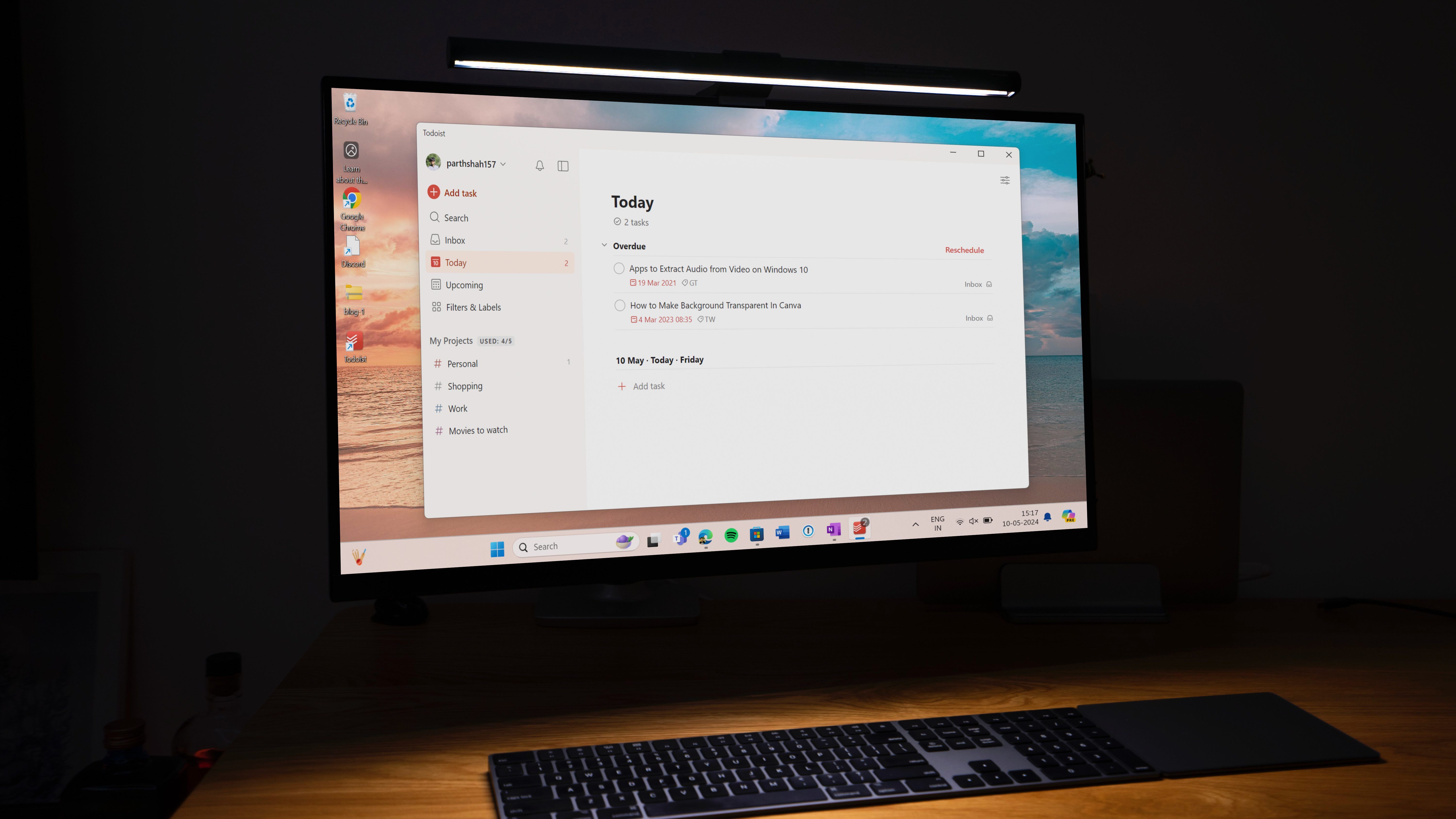
Related
5 Microsoft To Do alternatives that will boost your productivity
Microsoft To-Do is basic at best. Instead, check out these alternatives to power through a productive day.
OneNote wins in crucial areas
Including pricing
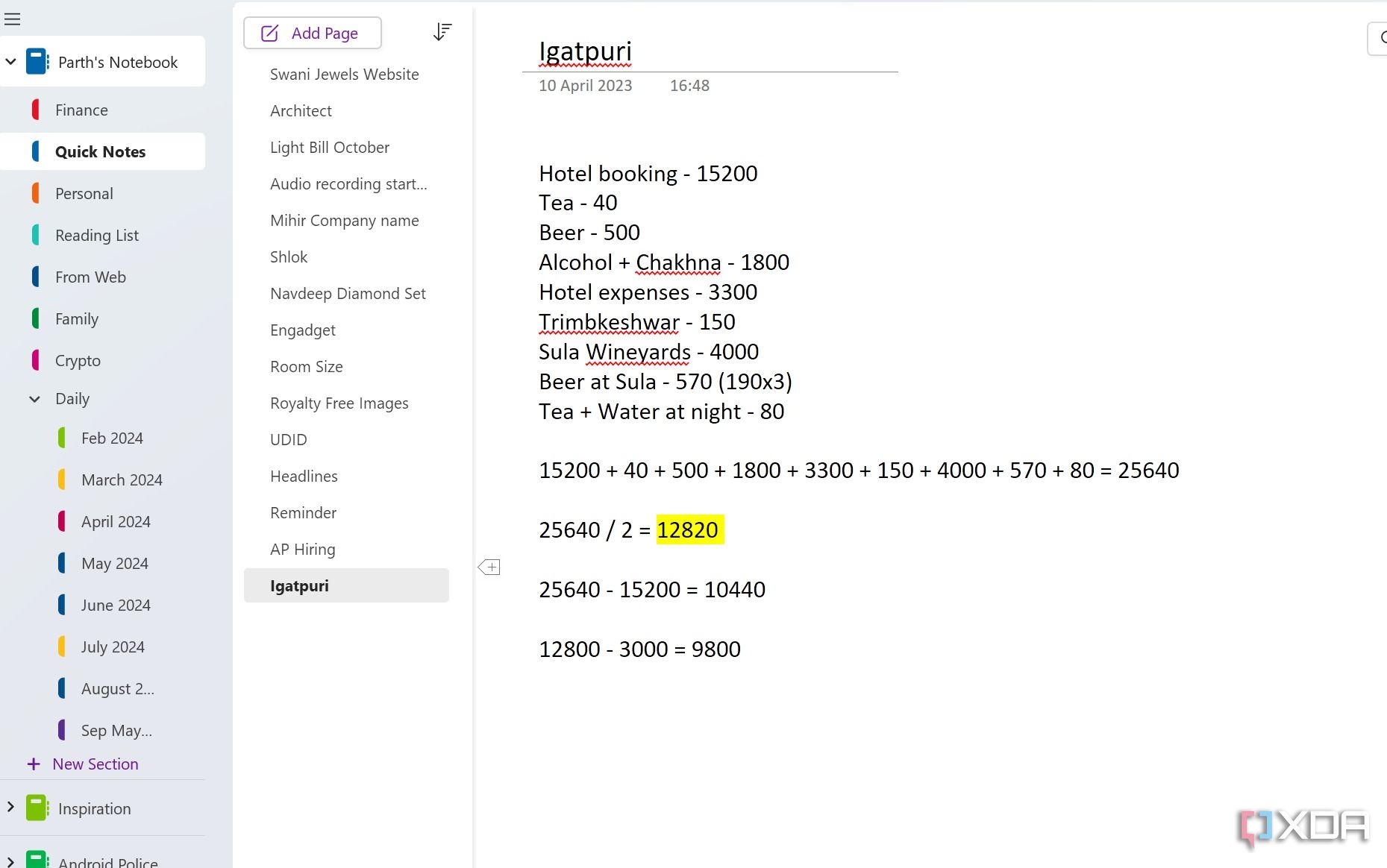
During my extensive test, OneNote offered a few killer features that really stood out. First and foremost, the fact that OneNote comes with a free price tag is a massive advantage. While Evernote requires a subscription for its full suite of features, OneNote provides all tools without costing a dime.
Beyond the cost, OneNote’s math calculation capabilities weren’t something I expected to use often, but it quickly became one of the useful features. Whether I was quickly tallying up expenses, figuring out percentages, or even doing some simple unit conversions, I could just type out an equation directly in my notes, hit the equals sign to get an answer.
Being an offering from Microsoft, OneNote integrates directly into the Windows Start Menu. I can access my frequently-used notebooks with a single click only.
Don’t choose wrong
After a month of intensive side-by-side usage, it’s clear that both OneNote and Evernote offer compelling reasons for their widespread popularity. OneNote truly excelled with its canvas-like freedom, built-in math calculation feature, a subtle yet powerful addition, which often saved me a trip to the calculator, all while remaining completely free.
On the other side, Evernote, despite its cost, offered a different kind of delight. The Evernote Home dashboard was a genuine pleasure to use. Integrating Tasks and the Calendar directly into the notetaking has turned it into my personal productivity hub. Ultimately, the choice between them boils down to your personal workflow. As for me, I have decided to stick with the green elephant for now.
But at the same time, I will continue to monitor OneNote updates, and I can’t wait to see how Microsoft implements Copilot notebooks in OneNote.
.png)














 English (US) ·
English (US) ·